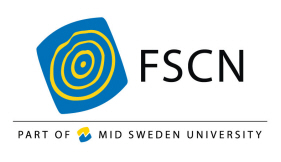Compac
The project "Plasticized cellulose composites for packaging applications" (Compac) has the goal to manufacture plasticized cellulosic materials in pilot scale and identify possible applications of it.
Plasticized cellulose is recyclable and can be used in packaging in order to replace some of the packages made from fossil based sources. Plasticized cellulose might be designed into curved shapes and it provides barrier resistance towards water vapour, oxygen and fat. It is the high strain at break, toughness and density of plasticized cellulose compared to normal paper that gives the material its unique properties. Traditionally, cellulose has been plasticized using zinc chloride but has the drawback of being toxic for life in water environments. With green chemistry there are possibilities to partly dissolve cellulose and a few of those systems might give similar plasticization effects as zinc chloride.
Expected results
The word plasticization might be misleading because tensile stiffness is probably unaffected or slightly improved. What plasticization does is that it densifies the sheet and reduces the pore volume. This has an effect on fibre-to-fibre bonding, mechanical strength in thickness direction and thereby also increases tensile strength and strain at break of the plasticized paper. Important is not to reduce the properties of the single fibres during plasticization because that will reduce also the properties of the paper. Therefore, there is a balance between on one hand partly dissolving or plasticizing the cellulose fibres and on the other hand leaving the molecular weight of the cellulose molecules unchanged and thereby maintaining the strength of the fibrils inside the fibres. Since densification also reduces pore volume and increases wet strength of the sheet this will influence moisture and gas transport rate through the material. Sheets made of plasticized cellulose are possible to deep draw or press mold. In summary, the effects of plasticization on barrier and mechanical properties on paper will extend the range of applications for cellulose based products.
Project planning
The University of Baden-Württemberg will hold the project together, investigate the mechanisms behind plasticization of cellulose fibres using zinc chloride and explore possible packaging applications for plasticized cellulose fibres. Mid Sweden University (Miun) and University of Oulu will study the market potential of plasticized cellulose. They will also explore green chemistry alternatives in collaboration for plasticizing cellulose including sheet making. The company Bla Traden and Miun will select suitable test method and do mechanical testing of the material with respect to mechanical and moisture response. Domsjö Fabriker will contribute with dissolving pulp and its characteristics in order to develop the most suitable pulp for a selected plasticizer. Fiber-x will produce a paper roll in their pilot paper machine from pure or plasticized dissolving pulp.
Financiers and partners
It is a European project financed by Vinnova and EU within the program of WoodWisdom ERA-Net +. Participating universities are from Sweden, Germany and Finland. In total, 11 Companies participate and the Swedish part of the project involves three companies, Domsjö Fabriker, Fiber-x and Bla Traden. The project runs during three years starting mid 2014. Total budget including in-kind contribution from companies is 1.2 M€ and the Swedish part of that is 0.1 M€.



